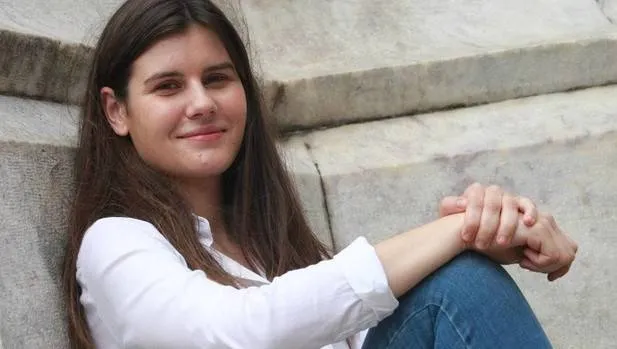Celia Gómez, a 23 -year -old young man from Telecommunication Technologies at the Public University of Navarra (UPNA) and passionate about space and telecommunications, confesses that he had never thought about undertaking.
However, everything changed when his sister Julia, ten years old, diagnosed with diabetes in August last year.At that time, the awkward glucose controls and the daily punctures that caused an extra concern to their brothers Celia and Eduardo, a doctor resident in family and community medicine in Granada began.
Both realized that there was no alternative to the current measurement system, so they joined their knowledge, telecommunications and medicine engineering, to try to provide greater comfort to Julia thus devising a non -invasive, capable continuous measurement systemof controlling blood glucose (blood glucose) in any diabetic with 24/7 autonomy.
This initiative was added other proper names such as Israel Arnedo Gil, professor in Celia's career and tutor at his end -of -degree work (TFG), and Jon Mikel Percaz, a doctoral student, in charge of developing this system togetherWith Celia, in addition to belonging to the MCG Research Group (Microwave Components Group) in the UPNA.The young entrepreneur recognizes that, if not for Israel, she would not have dared "to launch such an idea."
Celia explains that “the Wireless (wireless) system consists of a communication between the sensor and an intelligent bracelet: the sensor functions as a small radar that makes the measurement in high frequency.
Thanks to these waves, a good measurement resolution is obtained, sending it to the corresponding bracelet using Ble (Bluetooth low energy), which in turn processes the data and shows them on its OLED screen ”.
This system can be configured for each patient individually, that is, "once the optimal range is introduced where the patient is stable, the alert system of any anomaly, such as hypoglycemia or hyperglycemia."With this solution "the patient receives an alert indicating that his glycemia is out of his optimal range and that he can suffer hypoglycemia or hyperglycemia."
Financial Support
Initially the promoters of this idea called this Beasey solution, but at the time of registering the brand, Glucoembrace was called.Last year the young engineer presented this proposal to the 2017 Iníciate contest convened by CEIN, obtaining the first prize.
Through this contest, the public company supported the project at its launch, with 10,000 euros and with business advice.In addition, the student reports that this year he presented himself to entrepreneurial impulse, an edition in which he was also chosen.
From that moment they began "to add more people to the group (telecommunication students) and to advance faster."With entrepreneurial impulse, this project will enter 8,000 euros and for six months, as of September, you will receive training from CEIN and the mentors that sponsor it, such as Cinfa and Caja Rural.Thus, in November the company plans to establish with Israel Arnedo, who has gone from professor and tutor to partner.
Objectives
The system proposed by these entrepreneurs "is intended for diabetic children, since they are the ones who do not control their body and to those that can most affect them to suffer hypoglycemia, this being, the most dangerous of the possible alterations."This product controls glycemia without the need for a patient to click or have to carry some patch adhered to the body.
"Our user is any diabetic patient with this need," he adds.Celia Gómez describes this mechanism "innovative" by the way blood glucose is measured. "Of thisform, have managed to make a non -invasive measurement, since it is done through "radiofrequency, by microwave waves."On the other hand, "the sensor adjusts to an optimal power level to achieve a continuous measurement every five or ten minutes, depending on the configuration that has been performed," specifies.With this, "the total independence of the patient" is obtained.
Currently, both in boys and girls, parents are the first to control and warn their little ones when they should be punctured or measured to know their blood glucose level."With this system, the sensor measures every certain period of time, and in the case of finding some specific alteration, alerts the patient so that he can correct it as soon as possible."
Celia Gómez emphasizes that in the current development phase they have not found "many difficulties, after all, they are in the development stage."However, this young woman is aware of what she has left: “Our biosanitary system will have to be careful to face all clinical tests.In addition, both health and pharmaceutical bureaucracy is not simple, it is here that we will find more obstacles since they are environments that we do not control. ”Celia thinks that "this must be a continuous project more than punctual, for these patients suffering from one of the most commonly diagnosed diseases."
next months
Celia Gómez faces intense months with her participation in entrepreneurial impulse, the constitution of the company and reaching the phase of clinical tests "to offer as soon as possible a solution for these diabetics"; although it confesses that its true vocation is spatial engineering, ""Specifically the satellites, ”he details.Even knowing that he will stay for a while in Navarra, he acknowledges that he intends to move other horizons and environments."Finishing in Pamplona being from Granada was something unexpected," he says, but does not regret having "studied in the north," he concludes.

